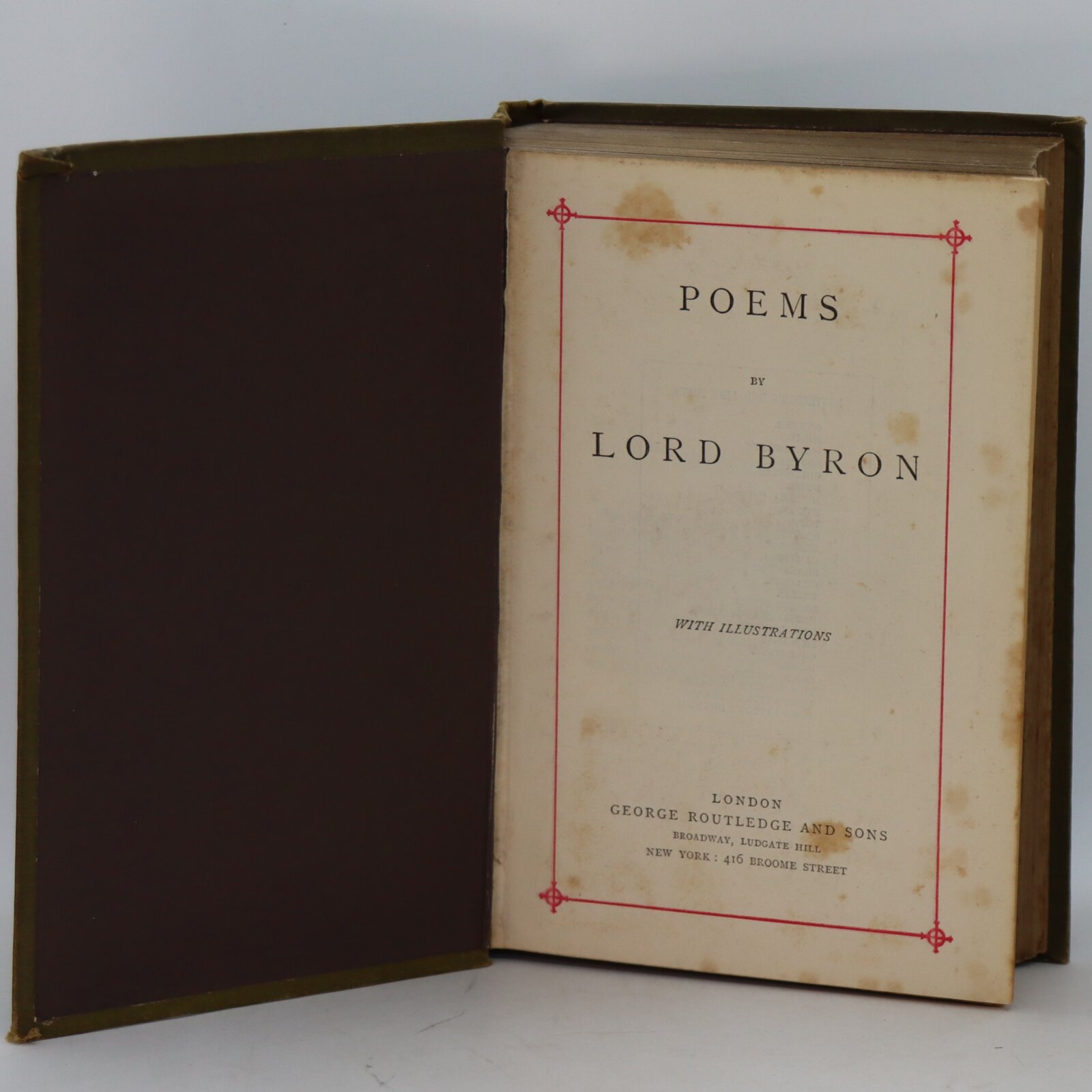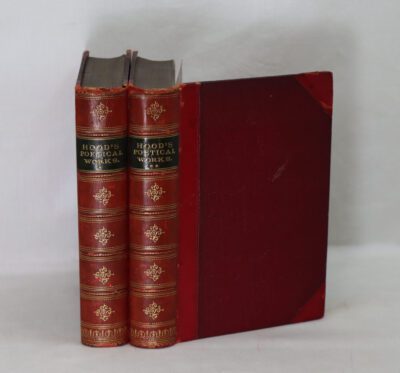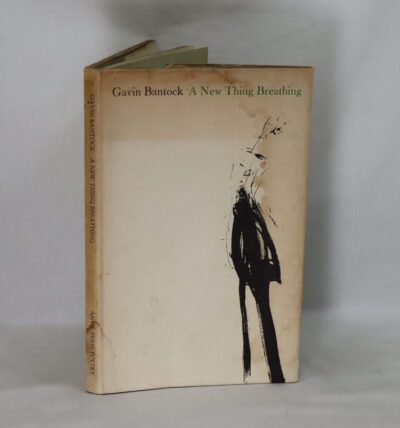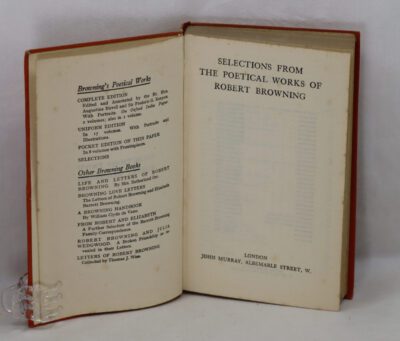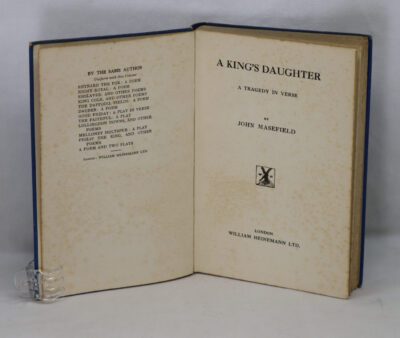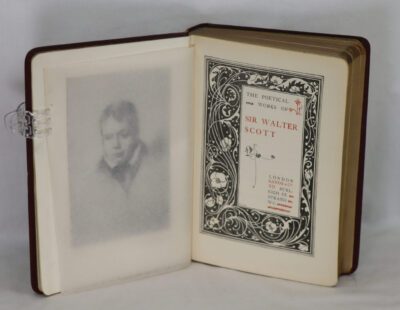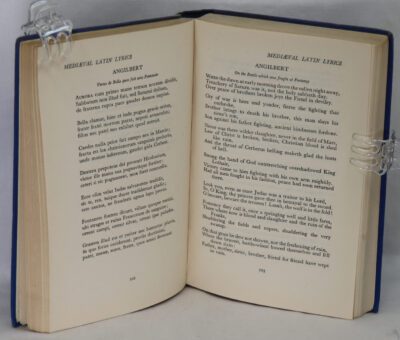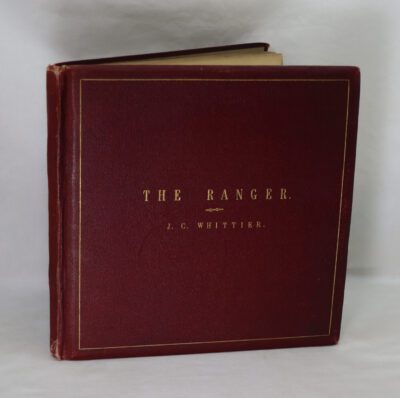Byron. Illustrated.
By Lord Byron
Printed: Circa 1910
Publisher: Goerge Routledge & Sons. London
| Dimensions | 14 × 19 × 4 cm |
|---|---|
| Language |
Language: English
Size (cminches): 14 x 19 x 4
Condition: Very good (See explanation of ratings)
Your items
Item information
Description
Green cloth binding with gilt title and black design on the spine and front board.
F.B.A. provides an in-depth photographic presentation of this item to stimulate your feel and touch. More traditional book descriptions are immediately available.
A good clean copy
George Gordon Byron, 6th Baron Byron 22 January 1788 – 19 April 1824), simply known as Lord Byron, was an English poet and peer. One of the leading figures of the Romantic movement, Byron is regarded as one of the greatest English poets. He remains widely read and influential. Among his best-known works are the lengthy narrative poems Don Juan and Childe Harold’s Pilgrimage; many of his shorter lyrics in Hebrew Melodies also became popular. He travelled extensively across Europe, especially in Italy, where he lived for seven years in the cities of Venice, Ravenna, and Pisa. During his stay in Italy he frequently visited his friend and fellow poet Percy Bysshe Shelley. Later in life Byron joined the Greek War of Independence fighting the Ottoman Empire and died leading a campaign during that war, for which Greeks revere him as a folk hero. He died in 1824 at the age of 36 from a fever contracted after the First and Second Sieges of Missolonghi. His only legitimate child, Ada Lovelace, is regarded as a founding figure in the field of computer programming based on her notes for Charles Babbage’s Analytical Engine. Byron’s extramarital children include Allegra Byron, who died in childhood, and possibly Elizabeth Medora Leigh, daughter of his half-sister Augusta Leigh.
FBA in Artifacts holds some of Byron’s half-sister paintings for sale This work has been selected by scholars as being culturally important and is part of the knowledge base of civilisation as we know it. This work was reproduced from the original artifact and remains as true to the original work as possible. Therefore, you will see the original copyright references, library stamps (as most of these works have been housed in our most important libraries around the world), and other notations in the work. This work is in the public domain in the United States of America, and possibly other nations. Within
the United States, you may freely copy and distribute this work, as no entity (individual or corporate) has a copyright on the body of the work. As a reproduction of a historical artifact, this work may contain missing or blurred pages, poor
pictures, errant marks, etc. Scholars believe, and we concur, that this work is important enough to be preserved, reproduced, and made generally available to the public. We appreciate your support of the preservation process and thank you for being an important part of keeping this knowledge alive and relevant.
Condition notes
Want to know more about this item?
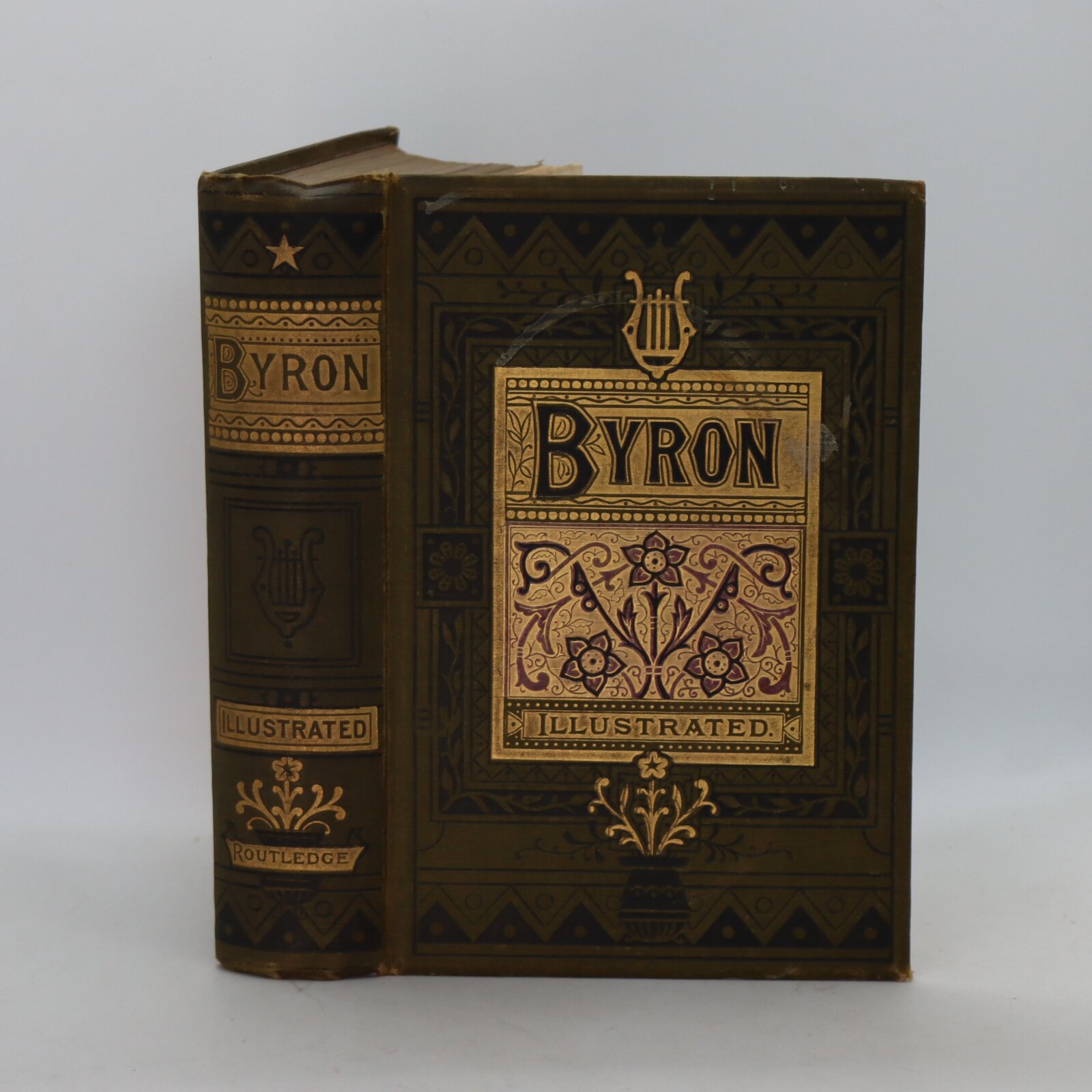
Related products
Share this Page with a friend

